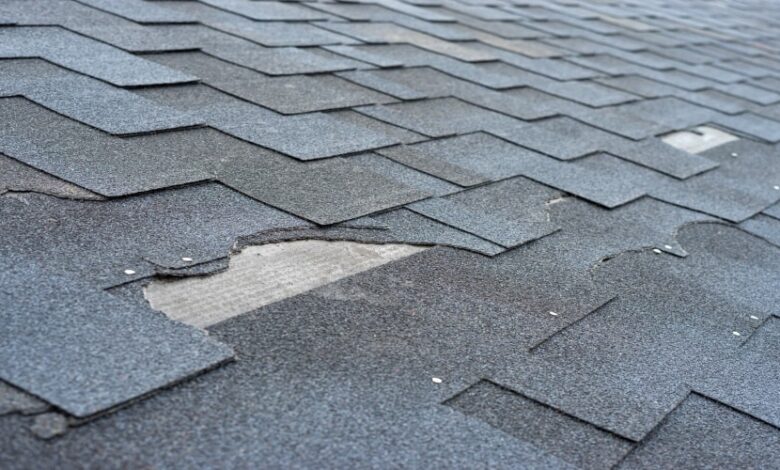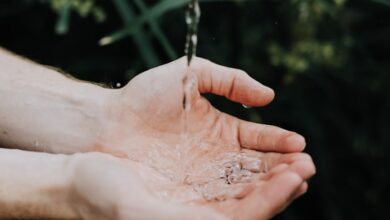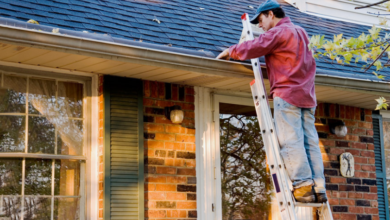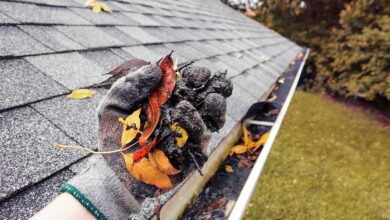A Guide to Resolving Roofing Issues in the PNW

Nestled within the breathtaking landscapes of the Pacific Northwest (PNW), homeowners find themselves navigating unique challenges when it comes to maintaining the crowning glory of their homes—the roof. The PNW, with its characteristic blend of lush greenery, coastal influences, and diverse weather patterns, demands a vigilant approach to roof care. This blog serves as your compass, guiding you through the intricate terrain of roofing issues in the Pacific Northwest and providing a comprehensive guide on how to address them effectively. In the Pacific Northwest, where the rain-kissed climate fosters the growth of moss and the coastal winds whisper tales of resilience, understanding the intricacies of roofing becomes paramount. As PNW residents, we are well aware that our roofs play a crucial role in shielding homes from the moisture-laden air, the occasional windstorms, and the weight of snowfall in specific regions. Here, where nature’s beauty meets its unpredictable side, roofing requires a tailored approach. Seattle roofing companies near me operating in the PNW are the seasoned navigators in this landscape. With their intimate knowledge of the local weather patterns, they become the stalwart companions in the journey of addressing and resolving roofing issues. From moss growth, a common adversary in these damp terrains, to the impact of coastal winds that test the endurance of rooftops, these Kirkland roofing companies near me are the heroes ensuring that homes stand tall and resilient. This aims to demystify the challenges that PNW roofs face and empower homeowners with the knowledge needed to proactively tackle roofing issues. Whether you reside in the coastal havens, where salt-laden air poses corrosion threats, or in the snow-laden pockets, where the weight of winter challenges your roof’s strength, this guide delves into the specifics. It explores the tailored solutions offered by experienced Bellevue roofing companies near me to address moss growth, prevent water damage, and fortify roofs against the region’s weather whims. From the coastal towns to the mountainous retreats, discover the strategies, tips, and expert insights that Bothell roofing companies near me employ to ensure that your home’s guardian—the roof—stands resilient against the ever-changing elements of the PNW.
1) Common Roofing Issues in the PNW
In the Pacific Northwest (PNW), homeowners grapple with a unique set of roofing challenges influenced by the region’s distinct climate and environmental factors. Chief among these challenges is the persistent issue of moss growth, thriving in the temperate and damp conditions that characterize the PNW. Moss not only compromises the visual appeal of roofs but also poses a significant threat to their structural integrity. Coastal areas, influenced by salt-laden air, face corrosion threats that can accelerate wear and tear on roofing materials, requiring specialized solutions. Additionally, the PNW experiences heavy snowfall in specific regions, creating a risk of snow accumulation that can lead to structural damage if not managed appropriately. As rain-kissed roofs become common in the region, understanding and addressing these common roofing issues are essential for PNW homeowners to ensure the longevity and resilience of their homes. Professional roofing companies in the PNW play a crucial role in offering tailored solutions to combat moss growth, prevent corrosion, and fortify roofs against the diverse challenges posed by the region’s weather patterns.
a) Moss Growth and Its Impact
The Pacific Northwest’s moderate temperatures and frequent rainfall create an ideal environment for moss growth on roofs. Moss, a non-vascular plant, thrives in damp conditions, spreading its green, velvety presence across shingles and tiles. This organic invasion begins innocuously with airborne spores settling on roofs. As moss establishes itself, it produces rhizoids that anchor it to the roof’s surface, creating a dense mat. This not only affects the aesthetics but, more importantly, compromises the roof’s structural integrity. Moss retains moisture, promoting an environment conducive to rot and decay. Understanding the life cycle of moss is crucial for homeowners, as it informs proactive measures to prevent its growth and mitigate its impact on roofs.
The consequences of moss growth extend beyond cosmetic concerns. The retained moisture beneath moss can lead to the deterioration of roofing materials over time. As moss accumulates, it lifts shingles or tiles, exposing the roof to potential water penetration. The persistent dampness encourages the growth of algae and fungi, further accelerating the degradation of the roof’s surface. Ultimately, if left unchecked, moss can significantly reduce the lifespan of a roof, leading to costly repairs or even premature replacement. Recognizing the impact of moss on PNW roofs is the first step toward effective prevention and maintenance.
b) Coastal Influences on Roofing
Coastal regions of the Pacific Northwest face a unique challenge—corrosion threats from salt-laden air. The salt carried by coastal winds can corrode roofing materials, particularly metal components. Corrosion weakens the structural integrity of the roof, making it susceptible to leaks and other issues. Coastal homeowners need to be vigilant about the corrosive effects of salt and implement strategies to protect their roofs from this specific challenge.
To combat the corrosive impact of salt-laden air, roofing maintenance strategies for coastal homes should include the use of corrosion-resistant materials. Stainless steel, aluminum, and specially coated materials can withstand the corrosive effects of salt, providing long-term protection. Regular inspections by roofing professionals are crucial to identify early signs of corrosion and address them promptly. Coastal roof maintenance involves a proactive approach to ensure the longevity of roofing materials in the face of relentless coastal influences.
c) Impact of Local Weather Patterns
In certain inland areas of the PNW, heavy snowfall during the winter months poses significant challenges for roofs. The weight of accumulated snow can lead to structural strain, potentially causing roof collapse or other structural damage. Homeowners in regions prone to heavy snowfall must implement measures to manage snow load effectively and prevent potential risks to the roof’s integrity. The Pacific Northwest is no stranger to rain and windstorms, especially in the fall and winter months. Excessive rain can lead to water penetration, leaks, and structural damage if roofs are not adequately prepared. Additionally, strong winds associated with coastal and winter storms can lift shingles, causing potential vulnerabilities. Homeowners must navigate these weather patterns by ensuring proper roof drainage, addressing potential leaks promptly, and fortifying roofs against the impact of windstorms through professional inspections and maintenance.
Understanding the multifaceted challenges posed by moss growth, coastal influences, heavy snowfall, rain, and windstorms is essential for PNW homeowners. Proactive measures, including regular inspections by experienced roofing professionals, the use of appropriate materials, and strategic maintenance, are key to mitigating these common roofing issues and ensuring the resilience of roofs in the dynamic Pacific Northwest climate.
2) Proactive Roofing Solutions
Proactive roofing solutions are paramount in the Pacific Northwest, where the climate poses unique challenges to roof health. One key proactive measure involves addressing moss growth, a pervasive issue in the region’s damp environment. Homeowners can employ regular inspections, promptly removing moss and debris to prevent moisture retention and subsequent roof damage. Choosing moss-resistant roofing materials, such as those incorporating zinc or copper elements, provides an added layer of defense. Coastal regions demand a specialized proactive approach, requiring the use of corrosion-resistant materials to counter the corrosive impact of salt-laden air. Additionally, effective waterproofing solutions play a vital role in preventing water damage, especially during the relentless rainy season. Installing proper drainage systems and ensuring adequate ventilation are proactive steps that mitigate the risk of leaks and structural deterioration. Engaging with professional roofing companies for routine inspections and maintenance aligns with a proactive strategy, allowing homeowners to address potential issues before they escalate. These proactive measures collectively fortify roofs against the diverse challenges presented by the Pacific Northwest’s climate, ensuring longevity, and minimizing the need for reactive, costly repairs.
a) Moss Prevention Techniques
Importance of Regular Moss Inspections: In the Pacific Northwest, where damp conditions foster moss growth on roofs, regular inspections play a pivotal role in moss prevention. Homeowners should schedule routine assessments, especially during seasons conducive to moss proliferation. Identifying and removing moss promptly is crucial to prevent its detrimental effects on roofing materials. These inspections not only maintain the aesthetic appeal of the roof but also contribute significantly to its long-term structural integrity. An effective line of defense against moss growth lies in the strategic selection of roofing materials. Opting for moss-resistant materials, often integrated with zinc or copper components, inhibits moss development. These materials create an environment where moss struggles to thrive, providing homeowners with a proactive solution to combat moss-related issues. Incorporating such materials during roof installations or replacements demonstrates a forward-thinking approach to preserving roof health in the Pacific Northwest.
b) Coastal Roofing Strategies
Coastal regions in the Pacific Northwest face the corrosive impact of salt-laden air, necessitating specific roofing strategies. Proactive coastal roofing involves the use of corrosion-resistant materials such as stainless steel or aluminum. These materials withstand the corrosive effects of salt, ensuring the roof’s structural integrity over time. Regular inspections by roofing professionals are essential to identify signs of corrosion early on and implement preventive measures, safeguarding coastal homes from the unique challenges posed by salt-laden coastal winds. Coastal areas are also prone to strong winds, demanding roofing systems designed to withstand these forces. Wind-resistant roofing involves the strategic installation of shingles or tiles to resist uplift during storms. Additionally, securing roofing materials properly and choosing products designed for wind resilience contribute to a proactive approach in coastal regions. Implementing wind-resistant roofing systems is essential to mitigate potential vulnerabilities and protect homes against the gusts that characterize coastal weather patterns.
c) Snowfall Preparedness
Snow Load Considerations: In regions experiencing heavy snowfall, proactive measures must be taken to manage snow loads effectively. Roof structures should be designed to withstand the weight of accumulated snow, and homeowners should be aware of their roofs’ load-bearing capacities. Regular assessments during snowy periods help identify potential concerns, allowing for timely interventions and the prevention of structural strain caused by heavy snow. Proactive snowfall preparedness includes preventing the formation of ice dams, a common issue in cold climates. Proper insulation and ventilation of the roof space help regulate temperatures, minimizing the conditions conducive to ice dam formation. Additionally, clearing snow from roof edges and gutters prevents ice dams from causing water backup and subsequent water damage. Snowfall preparedness is a proactive strategy that safeguards roofs against the challenges presented by winter weather, ensuring structural integrity and preventing potential water-related issues. Embracing these proactive roofing solutions tailored to the Pacific Northwest’s challenges empowers homeowners to preserve their roofs effectively. Whether combating moss growth, addressing coastal influences, or preparing for heavy snowfall, these strategies contribute to the sustained health and resilience of roofs in this dynamic region.
3) The Role of Roofing Companies
In the dynamic climate of the Pacific Northwest, characterized by persistent rainfall, coastal influences, and occasional heavy snowfall, adopting proactive roofing solutions is paramount for preserving the longevity and integrity of roofs. One key aspect of proactive roof maintenance involves moss prevention techniques. Regular moss inspections are foundational, allowing homeowners to identify and address moss growth promptly. These inspections, ideally performed semi-annually, enable the removal of moss and debris, preventing moisture retention and the potential for structural damage. Equally crucial is the use of moss-resistant roofing materials, often incorporating zinc or copper elements. These materials create an inhospitable environment for moss, offering a long-term solution that goes beyond mere visual appeal. For coastal homes, where salt-laden air poses corrosion threats, coastal roofing strategies become essential. Proactive measures include the use of corrosion-resistant materials, such as stainless steel or aluminum, to withstand the corrosive impact of coastal winds. Additionally, implementing wind-resistant roofing systems ensures that roofs can endure the gusts associated with coastal weather patterns. Regular inspections by roofing professionals, well-versed in coastal challenges, are crucial for identifying and mitigating corrosion risks promptly. In areas prone to heavy snowfall, snowfall preparedness is a proactive approach that starts with considering snow load considerations. Roof structures must be designed to handle the weight of accumulated snow, and homeowners should be aware of their roofs’ load-bearing capacities. To prevent ice dams and water damage, proper insulation and ventilation are imperative. Regular snow removal from roof edges and gutters further reduces the risk of ice dams, ensuring effective drainage and minimizing the potential for leaks and structural strain.
a) Choosing the Right Roofing Company in the PNW
Selecting the right roofing company in the Pacific Northwest (PNW) is a critical decision that starts with recognizing the importance of local expertise. The PNW’s diverse climate, varying from coastal regions to mountainous terrains, demands a nuanced understanding of the unique challenges faced by homeowners. Local expertise ensures that roofing professionals are well-acquainted with the specific weather patterns, environmental factors, and materials suitable for PNW roofs. When choosing a roofing company in the PNW, evaluating PNW-specific experience is paramount. A company with a proven track record in the region brings a wealth of knowledge regarding the intricacies of moss growth, coastal influences, heavy snowfall, and other PNW-specific challenges. Homeowners should inquire about past projects in similar geographical areas, looking for evidence of successful solutions tailored to the region’s climate.
b) Expert Solutions for Moss Growth
Addressing moss growth requires expertise, and roofing companies in the PNW specialize in professional moss removal techniques. These may include gentle cleaning methods, environmentally friendly mossicides, or power washing to ensure thorough moss elimination without causing damage to roofing materials. Professional removal not only enhances the roof’s appearance but also prevents the potential for structural harm caused by prolonged moss presence. Beyond removal, roofing companies offer expert solutions for long-term moss prevention. This involves the application of moss-resistant treatments and the use of roofing materials designed to deter moss growth. The expertise of roofing professionals ensures that preventative measures are customized to the specific needs of each home, providing homeowners with a sustainable solution to combat recurring moss challenges.
c) Coastal Roofing Expertise
Along the coastal stretches of the PNW, where salt-laden air poses corrosion threats, roofing companies with coastal expertise recommend and implement salt-resistant materials and coatings. These specialized materials, such as stainless steel or corrosion-resistant coatings, protect roofs from the corrosive effects of salt, ensuring long-term durability even in challenging coastal environments. Coastal areas are susceptible to strong winds, making wind-resilient roofing installations a necessity. Expert roofing companies in the PNW understand the dynamics of coastal wind patterns and employ strategies such as proper shingle installation, secure fastening, and wind-resistant materials to fortify roofs against gusts, safeguarding homes against potential wind-related damage.
d) Snowfall Management Services
In regions experiencing heavy snowfall, roofing companies provide essential snow removal services. Their expertise ensures that snow is safely and efficiently removed from roofs, preventing the risk of structural strain and potential collapse. Roofing professionals use specialized equipment and techniques tailored to PNW snowfall conditions, considering the region’s specific challenges. Winter roof inspections are a proactive service offered by roofing companies in the PNW. These inspections, conducted by experienced professionals, identify potential issues exacerbated by winter weather, such as ice dams, snow accumulation, or compromised insulation. Timely winter roof inspections allow for preventative measures to be taken, ensuring that roofs remain resilient throughout the colder months.
This comprehensive guide to resolving roofing issues in the Pacific Northwest (PNW), it’s evident that navigating the challenges posed by the region’s dynamic climate requires a strategic and informed approach. From moss growth, coastal influences, to heavy snowfall, each challenge demands a tailored solution rooted in local expertise. The role of reputable roofing companies in the PNW is pivotal, offering not only immediate solutions but also long-term strategies for roof resilience. By embracing proactive measures, such as moss prevention, coastal roofing expertise, and snowfall management, homeowners empower themselves to safeguard their roofs against the diverse elements of the PNW. Remember, your roof is more than just a shield against the rain; it’s a guardian that withstands the unique weather patterns, coastal winds, and occasional snowstorms that characterize the PNW. By choosing the right roofing company with a deep understanding of local challenges, you invest not just in repairs but in the longevity and durability of your home. As you embark on this journey of resolving roofing issues in the PNW, may your roof stand as a testament to thoughtful care, proactive solutions, and resilience against the ever-changing elements of this enchanting region. Here’s to many more years of a sturdy roof and the comfort it brings to your Pacific Northwest home.



